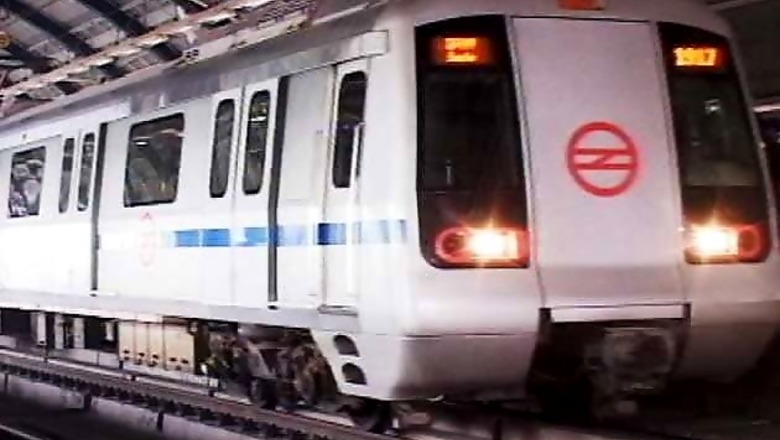
views
New Delhi: After offering people a peep into the history of the iconic Mandi House, Delhi Metro is now working on extending the heritage ride to the upcoming ITO Metro station, which will tell the story of the making of post-colonial India.
The new Mandi House metro station opened in late June with a permanent exhibition depicting the transition of the area from a colonial brick kiln zone to a modern cultural hub.
Encouraged by the good public response, the Delhi Metro Railway Corporation (DMRC) now wants the next stop in the extended Violet line, billed as the 'heritage line of the metro', to reflect the history of the area it falls under.
After laborious efforts to put up two panels at Mandi House station, the New Delhi-based Indian Council of Historical Research (ICHR) is now busy digging into the archives again to portray the city panorama between "the Supreme Court and the ruins of Feroz Shah Kotla".
"Coinciding with the building of the eponymous station, Metro has now asked us to bring alive the history of the area which is today famous as ITO. We have marked the zone starting from Supreme Court and will stop once we hit Feroz Shah Kotla.
"We will go a few kilometres on either side of this reference line and try and tell the story of the buildings, institutions and the landmarks that came up in this zone," Gopinath Ravindran, Member-Secretary, ICHR, said.
Ravindran says that most of the structures and buildings here came up in the first few decades after Independence and reflected the post-colonial Nehruvian aspirations of "building the new Republic" and the "free press".
"All buildings and institutions have stories and anecdotes to tell. The Supreme Court building erected in the 1950s was shaped to project an image of the scales of justice.
Bahadur Shah Zafar Marg, the Fleet Street of Delhi with the offices of major national dailies located on it, has the story of the national press after Independence," Ravindran too.
"Even the famous Tilak Bridge, previously known as Hardinge Bridge, has a story of its own," he added.
Top officials of the DMRC said that the upcoming exhibition at ITO metro station is part of the "organisation's continuous bid to beautify" its premises and "educate the masses" as they make their daily commute using the service.
"The civil work at ITO metro is over and we are now working on electrical connections and wiring, among others. As we seek to complete our work at the station, the exhibition, the work for which has started, would be ready just in time for the inauguration," a senior official of the DMRC's Corporate Communications department, told PTI.
ICHR, which received a letter on September 1 from DMRC to helm the project, has kept a tentative deadline of November to finish the work, but Ravindran said that "the speed of execution would also depend upon how much of the required information we are able to collect and how soon".
"After Supreme Court, we have the historic Link/Patriot building, followed by National Herald, the Dolls Museum, then Tej daily and the Indian Express House and the Times House. We will be approaching the institutions to access their archives for early images and their history in the area," he said.
Since most of the area was jungle till the 1950s, Ravindran said they would "also be approaching the CPWD and their archives to see change of land use for constructing these buildings, many of which are now city landmarks, like the Income Tax Office (ITO), which lends the area its name".
He said that in the interest of promoting history among the people, the idea also is to allow both short-term engagement while triggering a desire for undertaking long-term research.
"And, therefore, we would also be providing printed web addresses to individual names and places mentioned, which can be used to access detailed descriptions about, say a building or institution. Since, we cannot accommodate all our research material, like old maps and sketches, on the panel, they can be seen online for those who are interested," he said.
A senior official of ICHR, part of the project team, said, "We want visitors to have a long-term and interesting engagement. Therefore, the plan also is to make the visuals QR code-enabled."
Ravindran said that although it is not official yet, "the ICHR has suggested to DMRC that a thin, running marquee above the seats may be put up inside Metro carriages, on the lines of a feature in the London Underground system, which would depict labelled sketches of sites, landmarks and heritage buildings that are situated in the vicinity of the corresponding stations."
DMRC said that artists have also been commissioned to work on beautification of the ITO station premises.
DMRC already has a Metro Museum at Patel Chowk station, a full-fledged permanent exhibition on textiles and artworks of India at INA station and illustrated panels depicting the history of nearby monuments and landmarks at Jangpura, Udyog Bhawan and Lajpat Nagar stations, among others.















Comments
0 comment